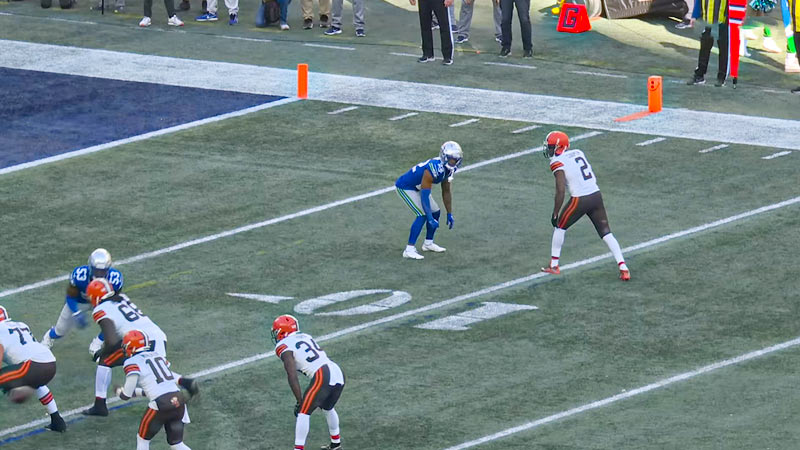In the intricate world of American football strategy, the Cover 1 defense stands as a tactical cornerstone.
This defensive scheme, characterized by one deep safety and tight man-to-man coverage, is a shield against deep passes while challenging defenders to excel in one-on-one matchups.
As we delve into the nuances of Cover 1, we’ll explore its key principles, variations, and coaching techniques.
From the role of free safety to countering offensive strategies, this exploration aims to demystify the Cover 1 defense, providing both players and enthusiasts with a deeper understanding of its intricacies.
Whether you’re a seasoned football aficionado or a newcomer to the sport, this guide will illuminate the strategic brilliance behind this fundamental defensive approach.
What Is the American Football Cover 1 Defense?
The Cover 1 defense is a defensive scheme used in American football.
In Cover 1, also known as “man-free” coverage, the defense employs one deep safety responsible for covering the deep part of the field while the remaining defenders play man-to-man coverage on the offensive players.
Key features of the Cover 1 defense include:
Single High Safety
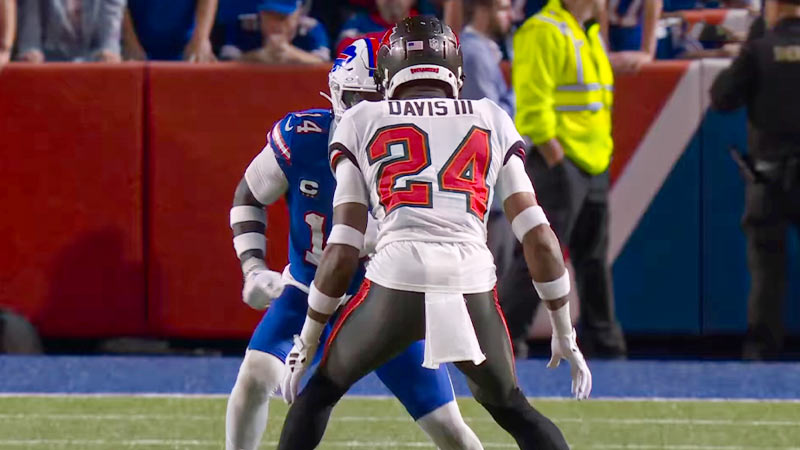
In Cover 1, there is only one safety deep, typically playing in the center of the field. This safety prevents deep passes and supports the cornerbacks if needed.
Man-to-Man Coverage
The other defenders, usually cornerbacks and linebackers, cover specific offensive players in a man-to-man fashion.
Each defender has a designated player to cover, and their goal is to stay with that player throughout the play.
Press Coverage
Cornerbacks often play press coverage, attempting to disrupt the receivers’ timing at the line of scrimmage and impede their routes.
Blitzing
Cover 1 allows for the possibility of blitzing, where additional defenders, such as linebackers or safeties, may rush the quarterback to disrupt the passing game.
However, this also increases the risk of leaving receivers open if the blitz fails.
The Cover 1 defense is effective against deep passes and provides tight coverage on individual receivers.
However, it also requires skilled and disciplined defenders, as any breakdown in coverage can leave a receiver open with little help over the top.
Coaches often use Cover 1 as part of a defensive game plan, mixing it with other coverages and defensive strategies to keep the offense off balance.
Breaking Down Key Variations in Cover 1 Defense
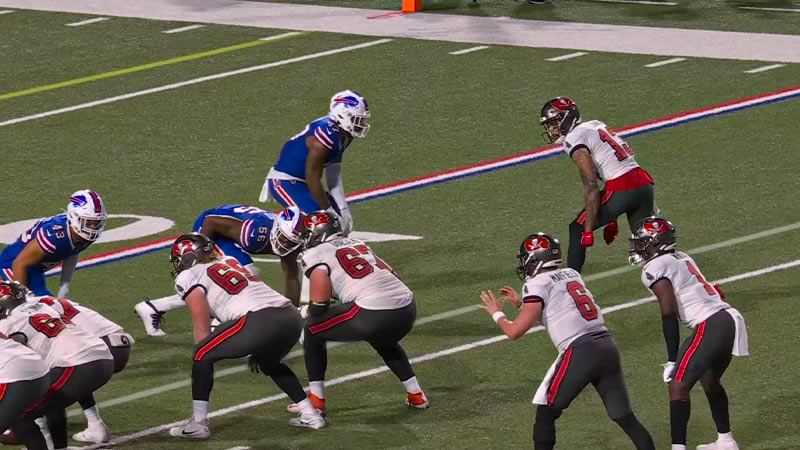
While the basic principles of Cover 1 defense involve one deep safety and man-to-man coverage, coaches often incorporate variations and adjustments based on specific game situations, opponent tendencies, and personnel.
Here are some key variations in the Cover 1 defense:
Robber Coverage
In traditional Cover 1, the deep safety is solely responsible for covering the deep part of the field.
In “robber” coverage, the free safety may read the quarterback’s eyes and break on intermediate routes or crossing routes in the middle of the field, essentially playing a “robber” role.
This can disrupt passing lanes and increase coverage in the short to intermediate areas.
2-Man (Two-Man) Coverage
In 2-Man coverage, the defense still plays man-to-man on the receivers, but the two safeties (strong safety and free safety) split the deep part of the field, each responsible for half.
This provides additional support against deep routes and helps prevent big plays.
Cover 1 Press
Cornerbacks in Cover 1 often play press coverage at the line of scrimmage, attempting to disrupt the timing of the receivers’ routes.
Press coverage can be particularly effective in disrupting short and quick passes, giving the pass rush more time to reach the quarterback.
Rat or Rat-Trap Coverage
In certain situations, defenses may use a “rat” or “rat-trap” defender, typically a linebacker, who reads the quarterback’s eyes and looks to jump short or underneath routes.
This adds an extra layer of coverage to discourage quick, short throws.
Blitz Packages
Cover 1 is compatible with various blitz packages. Coordinators may send additional pass rushers, often linebackers or defensive backs, to pressure the quarterback.
Blitzing adds complexity to the defensive scheme but also increases the risk of leaving receivers uncovered if the blitz is not successful.
Cloud Coverage
Instead of a traditional single-high safety look, some variations of Cover 1 employ a “cloud” coverage, where the cornerback and safety are on one side of the field together to cover deep routes.
This can provide extra support against serious threats to that side.
Pattern Matching
Defenders in Cover 1 may use pattern-matching techniques, where they initially play man-to-man but switch to zone coverage based on the routes and movements of the receivers.
This can help defenders handle crossing routes and maintain coverage integrity.
These variations allow coaches to tailor the Cover 1 defense to specific situations and opponents, adapting to offensive strategies and exploiting weaknesses.
Defensive coordinators often mix and match these variations throughout a game to keep offenses guessing and to address different offensive threats.
Coaching Tips and Techniques for Cover 1 Defense
Coaching a successful Cover 1 defense requires attention to detail, effective communication, and a solid understanding of the strengths and weaknesses of the scheme.
Here are some coaching tips and techniques for implementing and improving a Cover 1 defense:
Personnel Evaluation
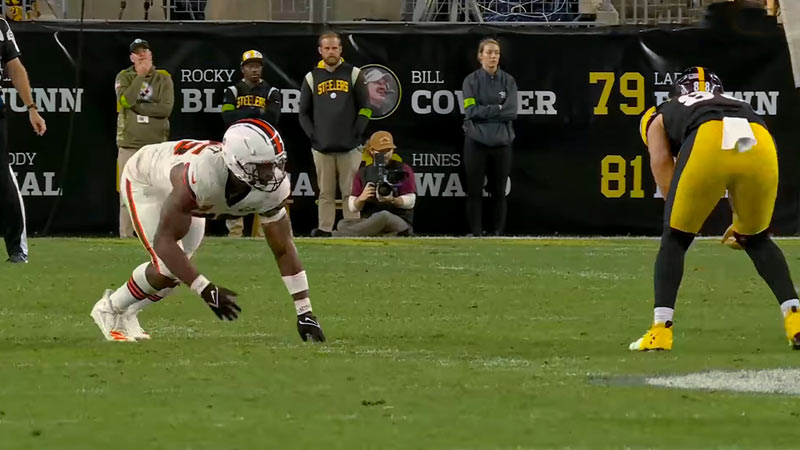
Assess the skills and strengths of your defensive players. Cover 1 requires athletic and disciplined defenders, particularly at cornerback and safety.
Ensure that your personnel is well-suited for man-to-man coverage and has the speed and agility to cover their assigned receivers.
Technique and Fundamentals
Emphasize proper techniques and fundamentals for defenders in man coverage. This includes teaching press coverage techniques for cornerbacks, emphasizing footwork, hand placement, and maintaining leverage on the receiver.
Communication
Communication is critical in any defensive scheme and especially important in man coverage.
Teach defenders to communicate effectively with each other, especially when passing off receivers in motion or in the middle of the field. Clear communication helps prevent coverage breakdowns.
Press Coverage Drills
Conduct specific drills to improve press coverage skills. Work on releases off the line of scrimmage, hand-fighting techniques, and maintaining proper positioning throughout the route.
Repetition in these drills helps defenders become more comfortable and effective in press coverage situations.
Eye Discipline
Stress the importance of eye discipline, especially for the safeties.
The free safety must read the quarterback’s eyes and react to the play, while cornerbacks must keep their eyes on their assigned receivers without being fooled by misdirection or play-action.
Pattern Matching
Teach defenders how to pattern match, especially against crossing routes. This involves recognizing route combinations and adjusting coverage responsibilities based on the receivers’ movements.
Pattern matching helps defenders maintain coverage integrity in the face of complex offensive schemes.
Blitz Variations
Develop effective blitz packages that complement Cover 1.
Teach proper timing and execution for blitzing defenders, and ensure that the remaining defenders can handle their man coverage responsibilities in case the blitz doesn’t reach the quarterback.
Film Study
Encourage players to study film to understand opponents’ tendencies and offensive formations. Film study helps defenders anticipate routes, recognize play-action, and make quicker, more informed decisions on the field.
In-Game Adjustments
Train your players to make in-game adjustments based on what they see from the offense.
This includes adjusting coverage responsibilities, recognizing offensive patterns, and communicating changes to teammates on the field.
Scout Team Simulation
Use the scout team to simulate opposing offenses and provide realistic looks during practice.
This helps defenders get a feel for the speed and style of the upcoming opponent and improves their ability to execute Cover 1 against specific offensive schemes.
Focusing on these coaching tips and techniques can help your defensive unit become more proficient in executing the Cover 1 defense and effectively counter opposing offenses.
Counter-Strategies Football Cover 1 Defense
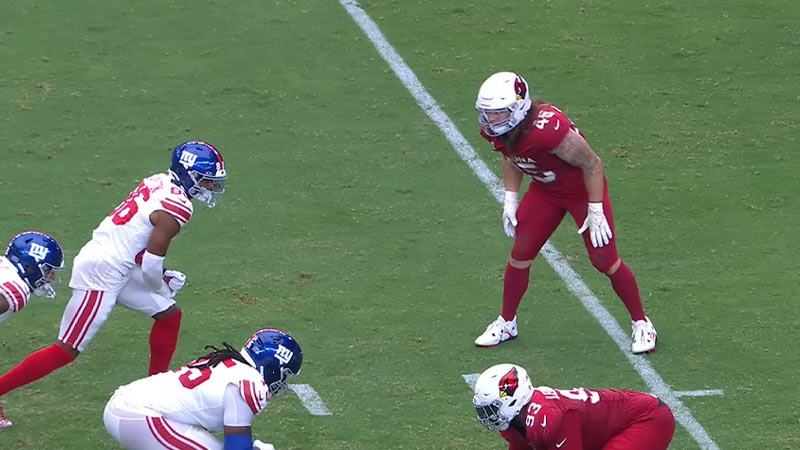
Offenses employ various counter-strategies to exploit or neutralize a Cover 1 defense. Defensive coordinators must anticipate these strategies and implement adjustments to mitigate potential weaknesses.
Here are some offensive counter-strategies against the Cover 1 defense:
Four Verticals
Exploiting the single-high safety, offenses may run “four verticals” with multiple receivers running deep routes down the field.
This can force the free safety to choose between covering two vertical routes, potentially creating a mismatch and an opportunity for a big play.
To counter this, the defense may use a “Two-High” safety look or employ pattern-matching techniques to handle vertical routes.
Isolation Routes
Identify favorable matchups and isolate receivers in one-on-one situations. Skilled receivers may be able to beat their man coverage, especially if they have a speed or size advantage.
To counter this, the defense may adjust coverage matchups, provide additional help from a linebacker or safety, or employ bracket coverage.
Crossing Routes
Crossing routes can create natural picks or rubs, making it challenging for defenders in man coverage to stick with their assigned receivers.
To counter this, defenders can use pattern-matching techniques to pass off receivers effectively and maintain communication to avoid coverage breakdowns.
Play-Action Passes
Play-action can draw the free safety forward, creating opportunities for deep passes behind the defense.
To counter play-action, defenders must maintain discipline with their eye control, and the free safety needs to read the quarterback’s intentions accurately.
Back-Shoulder Throws
Quarterbacks may attempt back-shoulder throws to receivers in man coverage, taking advantage of the defender’s inability to see the ball.
Defenders can counter this by playing properly, using their bodies to shield the receiver from the ball, and turning their heads to locate the pass.
Quick Passes and Screens
Quick passes and screenplays can exploit the space left by defenders in man coverage, especially if the pass rush doesn’t get to the quarterback in time.
Defenders can counter by recognizing these plays early, pursuing the ball aggressively, and making open-field tackles.
High-Low Concepts
Exploiting the space between the linebackers and the deep safety, offenses may use high-low route combinations to stress defenders and create open passing lanes.
Defenders can counter by dropping into zone coverage when appropriate, passing off receivers, and maintaining proper depth and spacing.
Formation and Motion
Offensive coordinators may use formations and pre-snap motion to identify man coverage and create favorable matchups.
Defenders must be aware of offensive tendencies, communicate effectively, and adjust coverage responsibilities based on offensive movements.
Mixing in Zone Concepts
Occasionally, mixing in zone coverage concepts within the defensive scheme can disrupt the rhythm of an offense expecting man coverage. This can confuse quarterbacks and force them to make more challenging reads.
Exploiting Safety Vulnerabilities
If the free safety is consistently being manipulated or caught out of position, offenses will look to exploit these vulnerabilities.
Defensive adjustments may involve disguising coverages, using multiple safeties, or rotating coverage responsibilities.
Defensive coordinators must proactively anticipate these offensive strategies and make timely adjustments to the Cover 1 scheme.
This might involve mixing in different coverages, altering coverage responsibilities, or implementing specific game plans tailored to the strengths and weaknesses of the opposing offense.
FAQs
What is the Cover 1 defense in American football?
The Cover 1 defense is a defensive strategy where one safety plays deep coverage while the remaining defenders engage in man-to-man coverage on specific offensive players.
It aims to provide tight coverage while defending against deep passes.
How does the Cover 1 defense differ from other defensive schemes?
Unlike zone defenses, Cover 1 relies on man-to-man coverage, offering tight marking on individual receivers. It differs from Cover 2 and Cover 3 by having a single deep safety responsible for the entire deep part of the field.
What are the primary responsibilities of the free safety in Cover 1?
The free safety in Cover 1 is responsible for providing deep coverage, preventing long passes, and offering support to cornerbacks when necessary.
Their role involves reading the quarterback’s eyes and reacting to potential deep threats.
How do teams counter the Cover 1 defense?
Teams may counter Cover 1 by utilizing four verticals, isolation routes, crossing patterns, play-action passes, and exploiting safety vulnerabilities.
Effective offensive strategies involve creating mismatches and taking advantage of the limited deep coverage provided by a single safety.
What are the key coaching tips for implementing a successful Cover 1 defense?
Successful implementation of Cover 1 involves personnel evaluation, emphasizing proper technique and fundamentals, promoting communication among defenders, incorporating effective press coverage drills, and making in-game adjustments based on offensive tendencies.
These coaching tips enhance the defense’s ability to execute the scheme effectively.
Wrapping Up
In the realm of American football strategy, the Cover 1 defense emerges as a dynamic force, blending discipline, athleticism, and tactical acumen.
From its single-high safety to the intricacies of man-to-man coverage, Cover 1 serves as a foundation for defensive prowess.
As coaches refine techniques and players embrace the nuances, Cover 1 becomes not just a strategy but a chess move on the gridiron. It’s a dance between defenders and their assignments, a calculated risk to stifle offenses.
Understanding the Cover 1 defense goes beyond the Xs and Os—it’s a journey into the chess match between offense and defense, where each move matters.
As the playbook unfolds, Cover 1 remains a testament to the artistry embedded in the sport, showcasing the strategic brilliance that defines American football.

